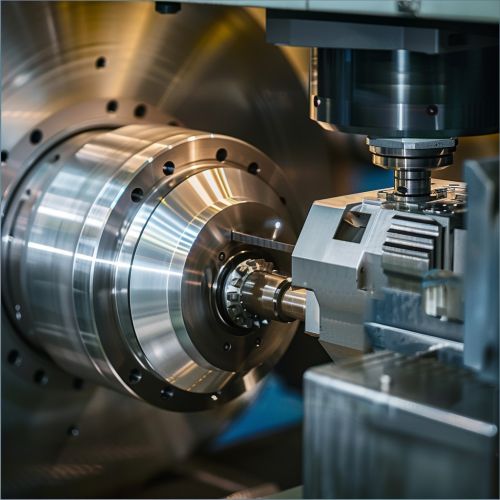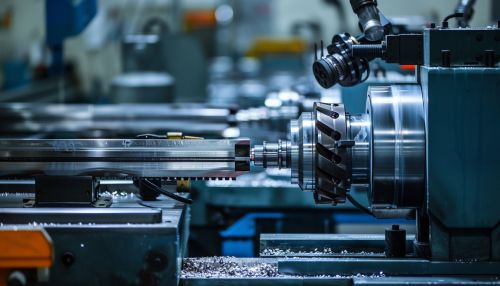Machining Processes
Introduction
Machining processes are a collection of material-working methods in which power-driven machine tools, such as lathes, milling machines, and drill presses, are used with a sharp cutting tool to mechanically cut the material to achieve the desired shape. These processes can be divided into various types, including turning, milling, drilling, and grinding, among others.
Types of Machining Processes
There are several types of machining processes, each with its own unique characteristics and applications.
Turning
Turning is a machining process in which a cutting tool, typically a non-rotary tool bit, describes a helical toolpath by moving more or less linearly while the workpiece rotates. The tool's axes of movement may be literally a straight line, or they may be along some set of curves or angles, but they are essentially linear (in the nonmathematical sense).


Milling
Milling is a machining process in which a rotating cutter with multiple cutting edges is used to remove material from a workpiece by advancing (or feeding) in a direction at an angle with the axis of the tool. It covers a wide variety of operations and machines, on scales from small individual parts to large, heavy-duty gang milling operations.
Drilling
Drilling is a cutting process that uses a drill bit to cut or enlarge a hole of circular cross-section in solid materials. The drill bit is a rotary cutting tool, often multipoint. The bit is pressed against the workpiece and rotated at rates from hundreds to thousands of revolutions per minute.
Grinding
Grinding is an abrasive machining process that uses a grinding wheel as the cutting tool. A wide variety of machines are used for grinding. If you are looking for grinding of hard materials or for the fine finish with accurate dimensions, grinding machines will be the best choice.
Factors Influencing Machining Processes
Various factors influence the machining processes, including the type of material, the rigidity of the machine and workpiece, the tool material, and the cutting parameters such as speed, feed, and depth of cut.
Material Type
The type of material being machined significantly affects the machining process. Hard materials require slower cutting speeds and higher cutting forces than soft materials.
Machine and Workpiece Rigidity
The rigidity of the machine and the workpiece can significantly affect the machining process. A rigid machine and workpiece are necessary to resist the cutting forces generated during machining and to ensure the accuracy of the machining process.
Tool Material
The material of the cutting tool also plays a significant role in the machining process. The tool material must be harder than the workpiece material and must be able to withstand the heat and wear generated during the machining process.
Cutting Parameters
The cutting parameters, such as cutting speed, feed, and depth of cut, significantly affect the machining process. These parameters determine the rate of material removal, the quality of the machined surface, and the power required for the machining process.
Conclusion
Machining processes are essential in the manufacturing industry, enabling the production of a wide variety of parts with high precision and accuracy. Understanding the different types of machining processes and the factors that influence them can help in selecting the appropriate process for a given application, leading to improved productivity and quality.
